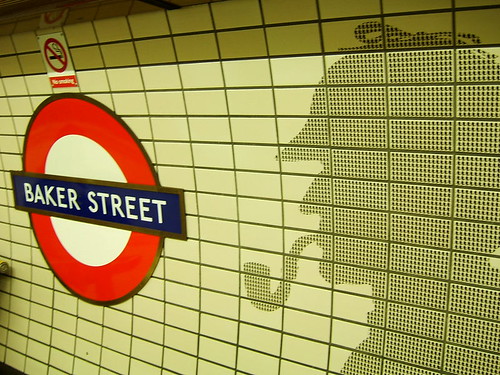
Understanding the Nuances of British Regional Accents
When you think of British accents, what comes to mind? Perhaps the refined tones of a BBC broadcaster or the cheeky lilt of a Cockney? These accents do more than just sound distinct; they carry hidden signals about social class, education, and even regional identity. In this exploration, we’ll dive into the fascinating world of British regional accents and uncover the subtle class signals they convey.
The Rich Tapestry of British Accents
The United Kingdom is home to a breathtaking variety of accents, each with its own unique characteristics. From the melodic brogue of a Scottish Highlander to the crisp and clear enunciation often associated with Received Pronunciation (RP), the diversity can be overwhelming. In fact, estimates suggest that there are over 40 distinct accents across England alone!
Accents often evolve due to a combination of historical, geographical, and sociolinguistic factors. For instance, the rise of urban centers during the Industrial Revolution led to the mixing of various dialects, while social mobility and access to education influenced the way accents developed and changed over time.
Class Signals in Accents
One of the most intriguing aspects of British accents is how they can serve as indicators of social class. In a society that has traditionally placed a strong emphasis on class distinctions, the way someone speaks can reveal a lot about their background. Here are some of the key ways that British regional accents signal class:
Received Pronunciation: The Accent of Authority
Received Pronunciation, often referred to as “the Queen’s English,” is an accent associated with the upper class and educated elites. Its characteristics include a non-rhotic pronunciation (the ‘r’ at the end of words is often dropped), a clear enunciation of consonants, and a certain level of formality in speech.
Historically, RP has been linked to the British establishment, including politics and academia. If someone speaks with an RP accent, they are often perceived as educated and authoritative, regardless of their actual background. This perception can create a hierarchy based solely on accent, leading to judgments about someone’s intelligence or social status.
Regional Accents: The Pulse of Local Identity
While RP may dominate in certain circles, regional accents have a charm and authenticity that connect speakers to their local communities. Accents like Geordie (Newcastle), Scouse (Liverpool), and Mancunian (Manchester) are rich in cultural heritage and often reflect a strong sense of local pride.
However, these accents can also carry stereotypes that impact how speakers are perceived. For instance, a Geordie accent might be associated with friendliness and warmth but also ignorance, while a Scouse accent might be perceived as brash or overly loud. These perceptions can influence people’s interactions in various social and professional contexts, leading to significant implications in the job market and beyond.
Social Mobility and Accent Shifting
In recent years, there has been a growing awareness of social mobility and the fluid nature of identity, including the way people speak. Accent shifting is the phenomenon where individuals adjust their accent to fit in with different social groups or environments. This can happen consciously or subconsciously and is often motivated by a desire to be accepted or to access opportunities.
For example, someone from a working-class background may adopt an RP accent when attending university or entering a corporate environment. This shift can help them blend in and be perceived as more competent or professional. However, it can also lead to feelings of disconnection from one’s roots, as adopting a new accent often entails leaving behind the nuances of a regional identity.
Conversely, individuals who adopt a regional accent in a formal setting may be seen as more relatable and down-to-earth. This can be a powerful tool in industries like marketing or entertainment, where authenticity resonates with audiences. The ability to navigate between different accents can be an asset, but it also raises questions about authenticity and personal identity.
The Role of Media and Pop Culture
Media plays an instrumental role in shaping perceptions of accents. Television shows and films often reinforce stereotypes about regional accents, influencing how they are perceived by broader audiences. For instance, characters with RP accents are often portrayed as educated and sophisticated, while those with regional accents may be cast in roles that emphasize their working-class status or lack of intelligence.
Shows like “The Office” (UK) have brought regional accents into the mainstream, allowing viewers to appreciate the humor and richness of these dialects. By showcasing characters with different accents, media can help challenge the stigmas associated with them. However, it can also perpetuate certain stereotypes, making it essential for creators to approach representation thoughtfully.
Accents and the Job Market
The impact of accent on employment prospects cannot be understated. Studies have shown that accents can influence hiring decisions, with some employers unconsciously favoring candidates with RP accents over those with regional ones. This bias can be detrimental, particularly in a job market where a candidate’s qualifications and experience should take precedence over their manner of speaking.
There is a growing movement advocating for accent diversity in professional environments. Companies are beginning to recognize the value of a diverse workforce that includes various accents, as it can foster creativity and innovation. By embracing this diversity, organizations can also challenge the stigma associated with certain accents and create a more inclusive workplace.
A Case for Accent Appreciation
As we explore the hidden class signals in British regional accents, it becomes clear that accent is more than just a way of speaking; it’s an integral part of identity and culture. Embracing the diversity of accents not only enriches our understanding of each other but also helps dismantle harmful stereotypes.
Encouraging an appreciation for the nuances of regional accents can foster greater acceptance and understanding in society. From Cockney rhymes to the soft tones of a Welsh lilt, each accent tells a story, reflecting the history, culture, and experiences of its speakers.
Conclusion: Celebrating Diversity in Speech
In the end, British regional accents are a treasure trove of cultural identity, history, and social signaling. They remind us that language is a living, breathing entity, constantly evolving and adapting to the world around us. By taking the time to appreciate the rich tapestry of accents across the UK, we not only celebrate the uniqueness of each voice but also recognize the shared humanity that connects us all. So, the next time you hear a familiar accent, take a moment to consider the hidden stories and social signals it carries.









